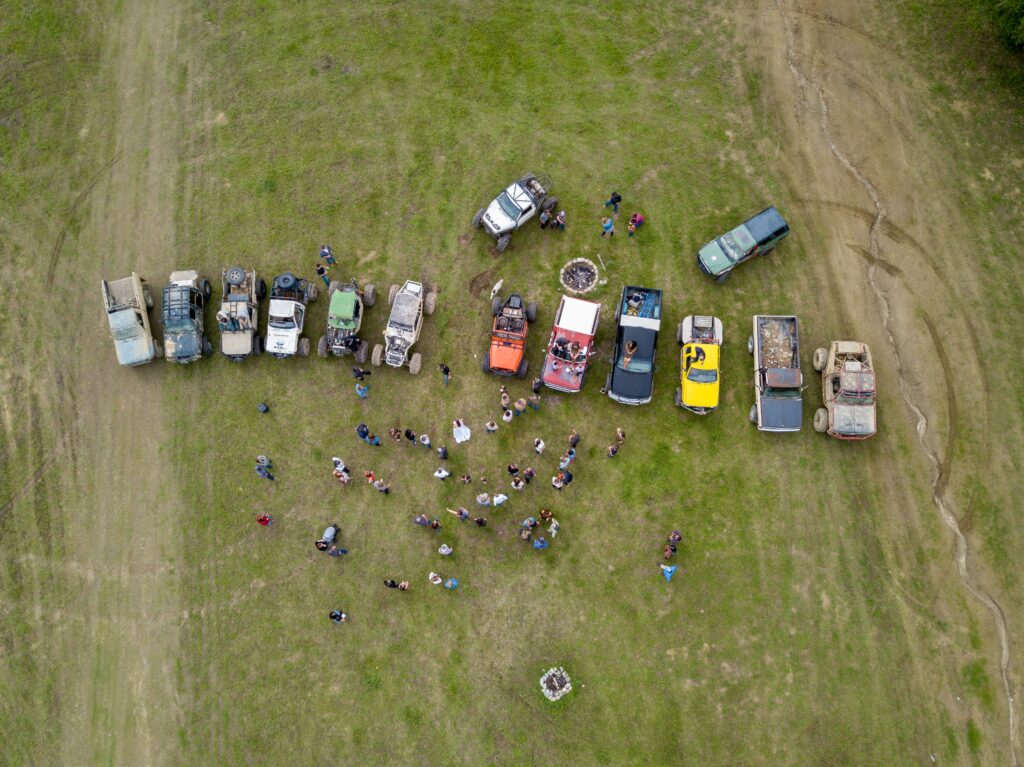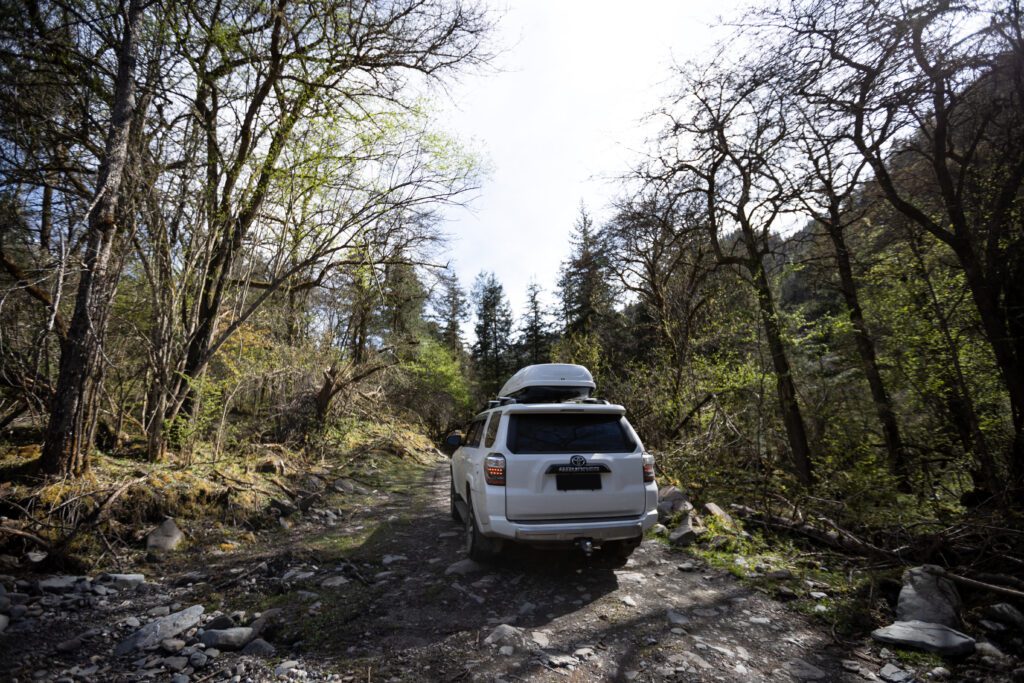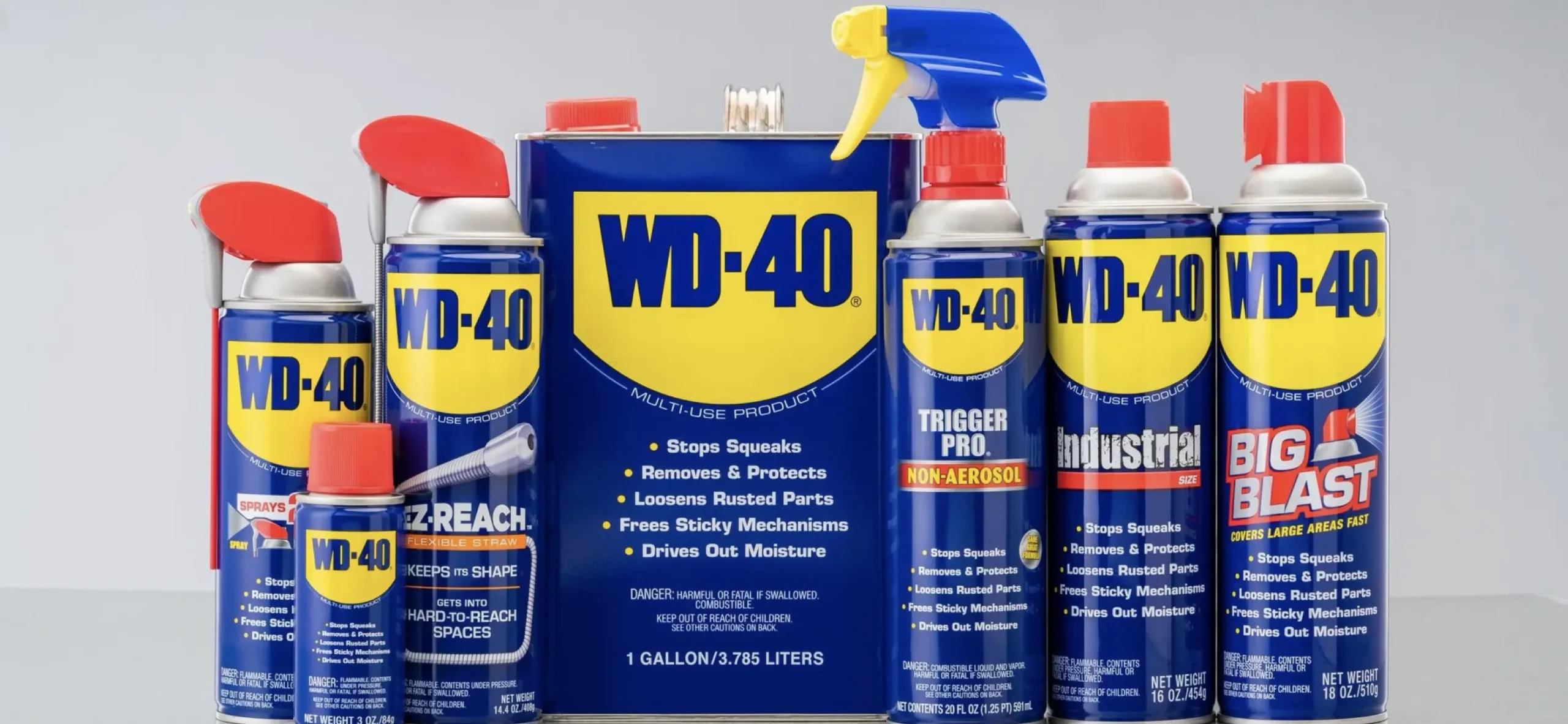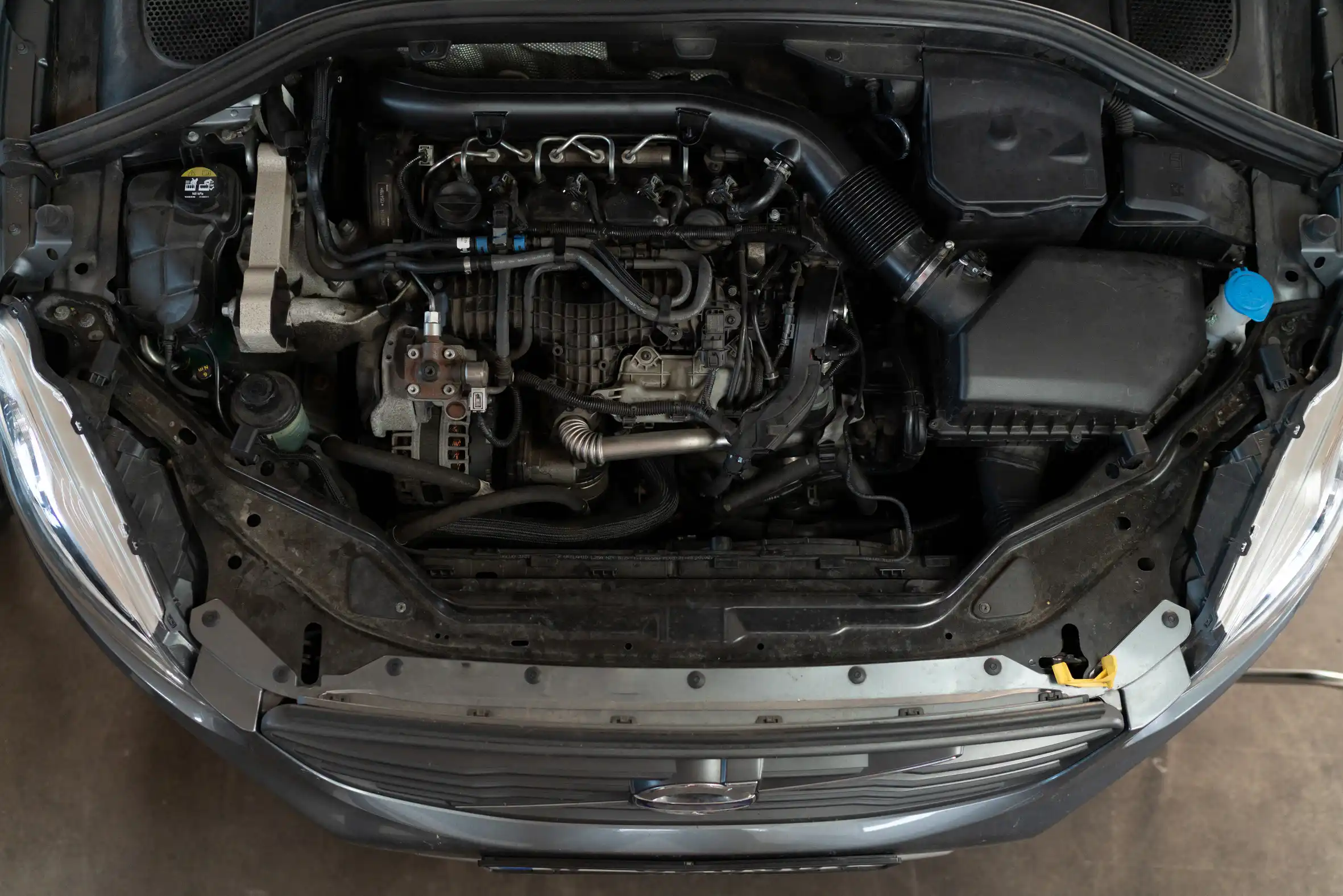The allure of overlanding is unmistakable. At its core, overlanding is the pursuit of distant horizons, self-reliance, and communion with nature. We go overlanding for the same reasons we go hiking, camping, skiing, or anything else we do outdoors. If you’re drawn to the call of the wild and envision a vehicle as more than just a means of transportation, then this journey might be your next great adventure.
The Basics
Starting with the basics, overlanding is not your everyday road trip or weekend camping jaunt. It’s about immersing oneself in a journey, prioritizing the voyage over the destination. Unlike off-roading, where the thrill lies in challenging terrains, overlanding emphasizes self-sufficiency, exploration, and personal growth.

As a novice, you don’t need a state-of-the-art vehicle or a whole lot of specialized gear immediately. For many people, the car you already own is capable enough to begin, but if you are considering a vehicle purchase, models like the Toyota Land Cruiser, Jeep Wrangler, and a number of American 4×4 trucks are perennial favorites among overlanders. The key is understanding its capabilities and limits. Invest time in researching your vehicle’s strengths, weaknesses, and upgrade paths. Speak with mechanics who are familiar with your car model, and even consider joining online forums or communities dedicated to overlanding. Even if you have a car that isn’t necessarily built for varied terrain, chances are there is a more approachable overlanding adventure out there which you could embark on. It’s all about knowing what your vehicle can handle and what routes will be manageable for you.

Education is your foremost ally. Attend workshops or classes on vehicle recovery, basic mechanics, and navigation. Knowledge of these fundamental skills will not only enhance safety but will also bolster your confidence when far from civilization. Books, videos, and online tutorials are excellent resources, but hands-on practice under the guidance of an experienced mentor is invaluable.
When plotting your first expedition, start modestly. Opt for destinations closer to home or well-traveled routes where help is accessible. This initial experience will allow you to understand the dynamics of overlanding, from setting up camp and navigating trails to managing resources like water and fuel. As you gain experience, your expeditions can gradually become more remote and challenging.
But remember, overlanding isn’t a solitary endeavor. It thrives on community. Connect with local overlanding groups or clubs. They often organize group trips, allowing beginners to learn the ropes while fostering camaraderie. These seasoned travelers can offer insights, share their experiences, and even lend a helping hand when the terrain gets tough.

Lastly, embrace the essence of the journey. Overlanding is as much an inward quest as it is an external adventure. It’s about embracing unpredictability, cherishing the serendipitous moments, and evolving with each mile. As you traverse rugged terrains and sleep under starlit skies, you’ll discover not just the vastness of the world around you, but also the depths of the world within.
Embarking on the path of overlanding is choosing a life less ordinary. So, as you steer toward the horizon, remember that every sunset, every challenge, and every new trail is an integral chapter in your ever-unfolding story of adventure.
Vehicle Choice
When venturing into the realm of overlanding, the kind of vehicle you need largely depends on your specific goals, destinations, and comfort requirements. At its essence, overlanding is about exploration and self-reliance, and while certain vehicles are more commonly associated with this pursuit due to their durability and off-road capabilities, many enthusiasts begin their journeys with whatever they have on hand. Again, you can almost certainly find an overlanding adventure that will be suitable for the car you currently drive, but that said certain kinds of cars come stock with features that lend themselves to this kind of adventure.

Traditional sport utility vehicles (SUVs) and trucks with four-wheel-drive (4WD) or all-wheel-drive (AWD) systems are popular choices in the overlanding community. These vehicles typically offer robust ground clearance, making it easier to traverse rugged terrains and obstacles. Their build also allows for modifications and attachments, such as roof-top tents, storage solutions, and additional protective gear, making them more adaptable for extended trips in the wilderness.
However, it’s worth noting that not all overlanding requires the most rugged of vehicles. For those whose adventures are on milder terrains or involve well-maintained dirt roads, even a regular sedan or van can suffice. Many van-lifers have converted their vehicles into cozy, mobile abodes and have traveled vast distances overlanding on paths less treacherous.

Regardless of the specific model or type, the essential aspect of an overlanding vehicle is its reliability. You’ll want a vehicle that you can trust in remote areas, away from easy access to mechanics or repair shops. Regular maintenance, a thorough understanding of your vehicle’s capabilities and limitations, and some basic mechanical knowledge will be crucial.

In essence, while certain vehicles might be better suited for specific terrains or offer more luxurious amenities, overlanding is about the spirit of exploration. It’s entirely possible, and often enlightening, to start with what you have, gradually making upgrades or changes as you delve deeper into the overlanding world and discover what you truly need for your adventures.
Modifications
One of the most economical ways to make your current ride into an overland adventure machine is by making modifications and upgrades to it. With the right adjustments it’s possible to set your daily driver up for handling more extreme road conditions, not to mention creating a place to sleep at night and storage for the gear you’ll be bringing along with you. Diving into the world of overlanding often means tailoring your vehicle to better navigate diverse terrains and optimize self-reliance. One of the most fundamental modifications many consider is enhancing the vehicle’s ground clearance. By upgrading to a suspension lift, you give your car the height needed to traverse rocky and uneven paths. Paired with this, selecting robust all-terrain or mud-terrain tires can offer better traction and durability, essential for off-road environments.

Protection is another facet of overlanding modifications. As you journey through dense brush or rocky trails, skid plates can be added to protect the underbelly of your vehicle, especially vital components like the oil pan or transmission. Bull bars or brush guards at the front can shield the vehicle from potential impact and also provide mounting points for additional gear.

Lighting plays a pivotal role when traveling through less inhabited or unlit areas. Auxiliary lights, be they floodlights, spotlights, or light bars, can illuminate the path ahead, ensuring safer night-time travel. Given that overlanding involves extended stays in remote locations, it’s wise to think of power and storage. Dual battery systems can be installed to ensure you have a backup power source, while roof racks or cargo solutions can house essential gear, from tents to jerry cans for extra fuel.
Inside the vehicle, a comprehensive communication and navigation system can be a lifeline. Consider installing a CB radio or satellite communicator, especially for regions with sparse cell service. Paired with this, a reliable GPS system specifically tailored for off-roading can guide you through unfamiliar terrains.

Comfort shouldn’t be an afterthought, either. Seat covers designed for durability can protect your vehicle’s interior, while storage solutions like drawer systems or cargo barriers can help organize gear and supplies efficiently. Additionally, for those who prefer not to camp on the ground, roof-top tents can be mounted to provide elevated sleeping quarters.
Lastly, the need for self-recovery in isolated terrains cannot be overstressed. A winch, mounted to the vehicle, can be invaluable if you find yourself stuck, while recovery boards can assist in gaining traction in sandy or muddy conditions.
In essence, the extent of modifications depends on your intended destinations, the challenges anticipated, and personal preferences. It’s always prudent to prioritize safety and reliability over aesthetic modifications, ensuring your vehicle is not just equipped for the journey but also for any unforeseen situations.

In the end, creating an overland rig and heading out for an adventure starts with your desire to do so. It’s possible to embark on your first overland journey with just the car you have now, a few basic supplies, and a hammock or a sleeping bag. However, this is definitely an area where investment can pay off. Purchasing a vehicle built for varied terrain, especially one with four-wheel or all-wheel drive, will increase the range of locations you can take on. Having additional space will increase your level of comfort, and there are many modifications you can make which will broaden your horizons, literally, when it comes to overlanding. It might be best to look at getting started like you would going for a swim for the first time: start by dipping your toes in, then gradually wade forward as comfort (and the budget to upgrade) allows.





